Warlock (1989 film)
6.2 /10 1 Votes
Film series Warlock Film Series Duration | 6.2/10 IMDb Genre Action, Fantasy, Horror Language English | |||||||||||||||||||||||||||||||||
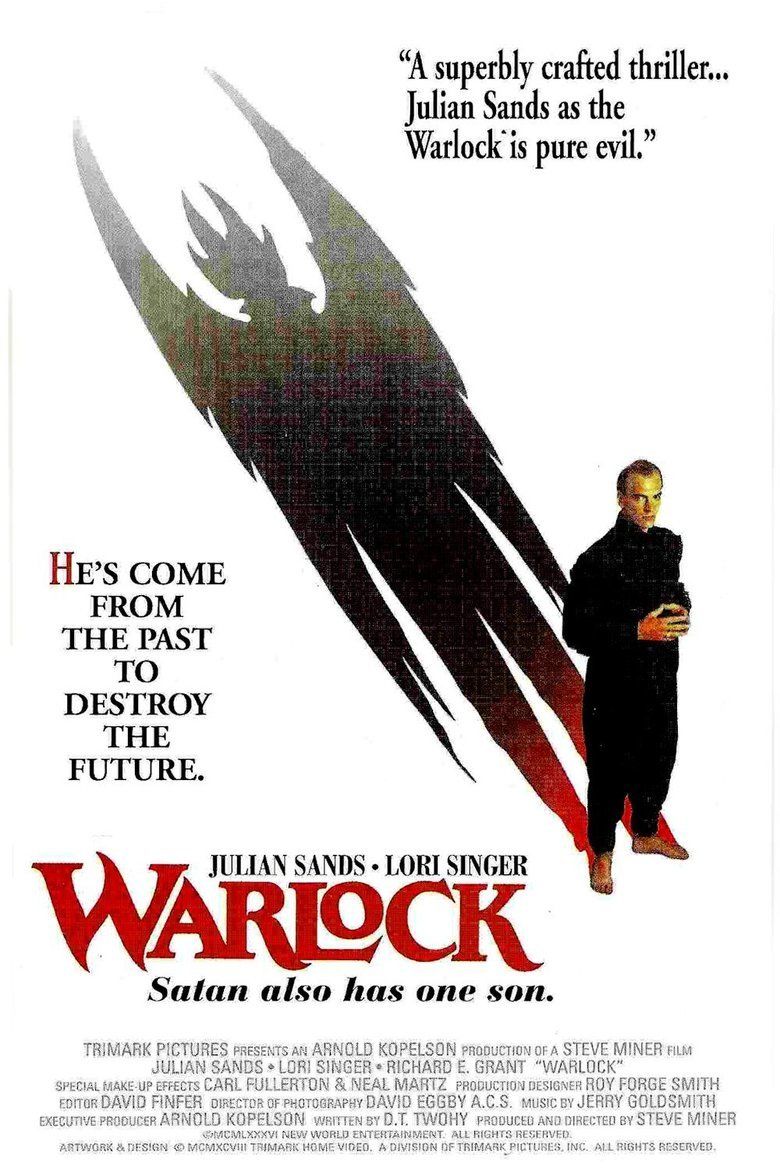 | ||||||||||||||||||||||||||||||||||
Release date December 1, 1989 (USA) Cast (Warlock), (Kassandra), Richard E. Grant (Giles Redferne), (Channeler), Kevin O'Brien (Chas), Richard Kuss (Mennonite)Similar movies Harry Potter and the Order of the Phoenix , Harry Potter and the Half-Blood Prince , Harry Potter and the Chamber of Secrets , Harry Potter and the Prisoner of Azkaban , Harry Potter and the Goblet of Fire , Harry Potter and the Philosopher's Stone Tagline Satan also has one son. | ||||||||||||||||||||||||||||||||||
warlock 1989 forever cinematic review
Warlock is a 1989 American cult supernatural horror film produced and directed by Steve Miner and starring Julian Sands, Lori Singer, and Richard E. Grant. It was written by David Twohy with a soundtrack by Jerry Goldsmith. The story concerns an evil 17th century warlock who flees to the 20th century pursued by a witch-hunter.
Contents
- warlock 1989 forever cinematic review
- Plot
- Cast
- Production
- Deleted scenes
- The Channeler or Breaking Woman
- Rooster Compass
- The Unbaptized Male Child
- Release
- Reception
- Original release
- Expanded version
- Sequels and spin offs
- Copycat murder
- References
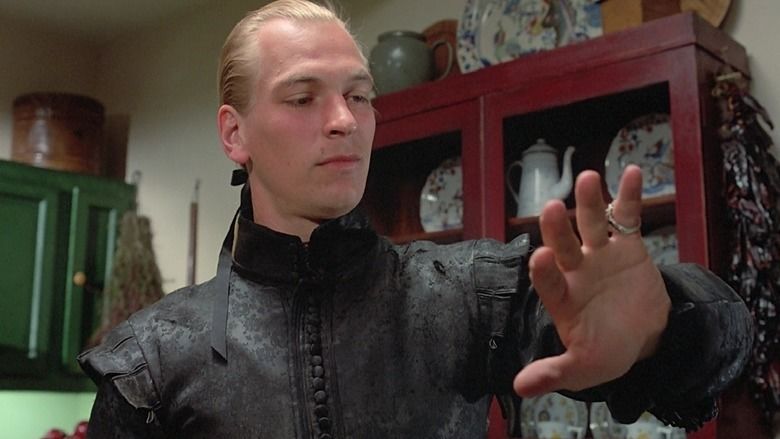
Plot
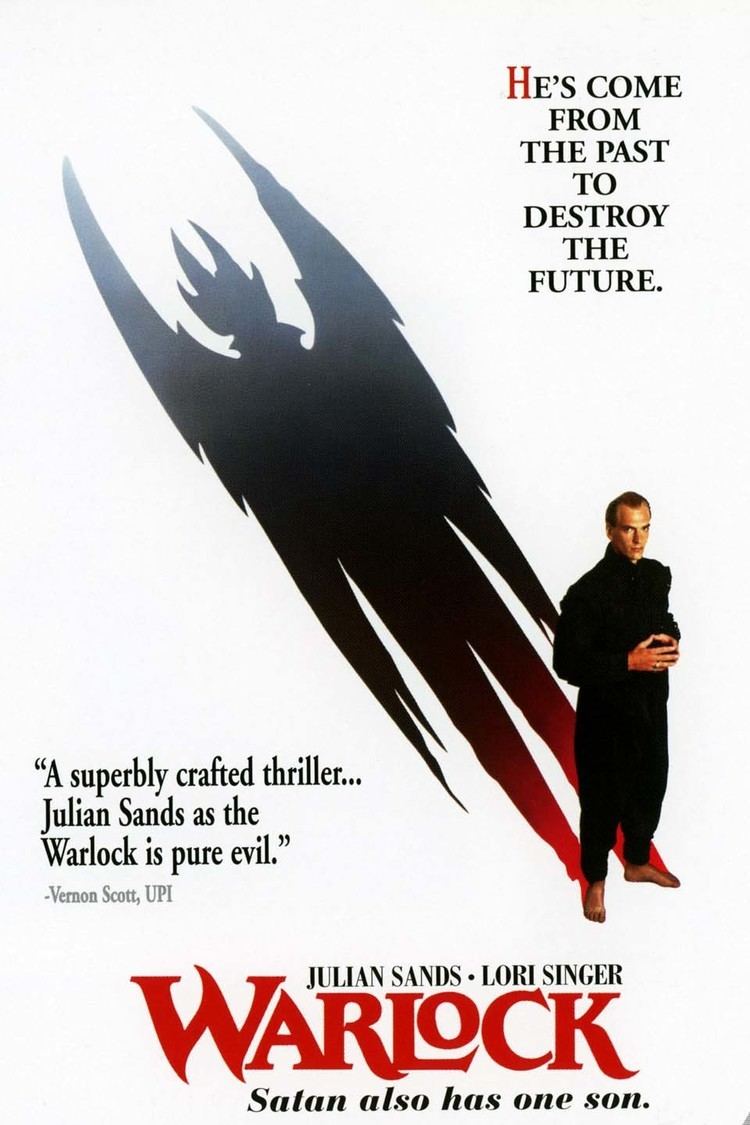
The Warlock (Julian Sands) is taken captive in Boston, Massachusetts in 1691 by the witch-hunter Giles Redferne (Richard E. Grant). He is sentenced to death for his activities, including the bewitching of Redferne's bride-to-be; but, before the execution, Satan appears and propels the Warlock forward in time to 20th century Los Angeles, California. Redferne follows through the portal.

The Warlock attempts to assemble The Grand Grimoire, a Satanic book that will reveal the "true" name of God. Redferne and The Warlock then embark on a cat-and-mouse chase with the Grand Grimoire and Kassandra (Lori Singer), a waitress who encounters Giles attempting to use a witch compass to track the Warlock. Explaining some basic rules of the Warlock, such as their weakness to purified salt, Kassandra follows Giles after seeing the compass work and, knowing the warlock stole her bracelet, putting an aging spell on her.
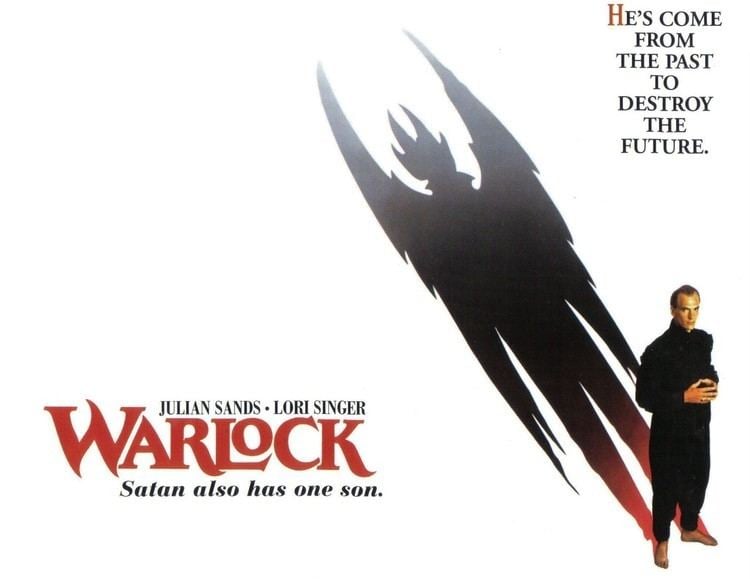
The Warlock assembles two-thirds of the Grimoire; and Giles is stunned to learn that the last portion is buried in his grave, buried off of church lands under the cursed sign of a witch. The Warlock appears and starts a ritual to assemble the Grimoire. After seeing the name of God appear on the book, The Warlock is about to call it out and unmake existence when Kassandra injects him with salt water, and he bursts into flame. Redferne returns to his own time. In the epilogue, Kassandra is seen burying the Grimoire in the Great Salt Flats.
Cast
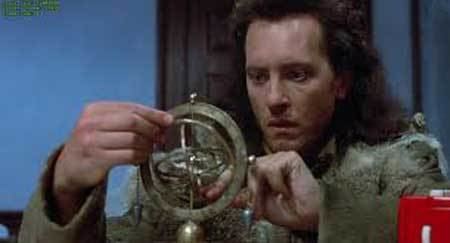
Production

Screenwriter David Twohy first conceived the story as a reversal of what the film ultimately became. "I spent, if not wasted, a good six to eight weeks trying to make the warlock somebody who was persecuted during the witch craze of the 17th century, and came forward to this time and experienced much the same persecution here for other reasons," he commented to Cinefantastique Magazine. Twohy revised and refined the story, but he had to compromise some of his ideas due to limitations of the budget.
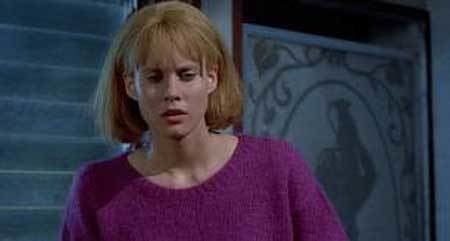
Because the film begins in the colonial United States, director Steve Miner insisted that the leads were portrayed by British actors. "They'd been off the boat for five years, ten years at most. They're English," he quipped. Producer Arnold Kopelson suggested Julian Sands, but it was director Miner who decided to cast Sands against type as the evil Warlock instead of goodhearted Redferne. Sands had been offered many roles in horror movies and initially wasn't interested. "When I first got the script, it sat around for a while because I didn't think it was my kind of thing," Sands remarked in a 1991 interview. "When I read it, I saw it was a black comedy rather than a slasher-type film [and] was very happy at the prospect of working with Steve." With Sands committed to star, Miner's idea of casting Withnail & I star Richard E. Grant as the warlock could have fallen through but he decided to audition him anyway and was so impressed that Grant was given the role of Redferne.

Problems arose with actress Lori Singer, who was reportedly difficult and caused headaches for makeup man Carl Fullerton. An elaborate series of makeups to progressively age Singer had been designed, tested and approved. However, on the day of her transformation into a 40-year-old, Singer refused to wear any prosthetics, forcing the makeup men to resort to stippling, shadowing and having the actress don a gray wig. For her 60-year-old incarnation, she agreed to wear prosthetics on her cheeks and chin but refused to let them put appliances on her nose or eyes.
The bulk of the movie was shot on location around the United States. The opening 17th century sequence was filmed at Plimoth Plantation in Massachusetts, and later scenes were shot in the Boston area. The farmhouse with the iconic red barn is the George Washington Faulkner House, which was open to the public with an annual pumpkin patch attraction for many years. Because of the logistics of the special effects involved, however, a graveyard was erected on a soundstage in Los Angeles for the climactic finale.
The post-production optical effects work was to have been supplied by Dreamquest Images but they were replaced by Perpetual Motion for budgetary reasons. The warlock possessed the ability to conjure bolts of ectoplasm which he hurled at unsuspecting foes, but this proved problematic and had to be toned down since it could only be achieved through animation. Unfortunately, no one from Perpetual Motion was available to supervise on the set, so the crew had to shoot background plates and plot the effects on their own and hope that the FX team had the proper materials to work with.
Deleted scenes
Due to a variety of factors, several scenes were cut, reshot or altered in post-production. Several deleted scenes are glimpsed in the theatrical trailer and other photographs and information have surfaced.
The Channeler or Breaking Woman
In the original version of the channeling sequence, actress Mary Woronov ripped open her blouse to reveal the "Eyes of Satan" in place of her nipples. After mouthing the words of the devil, the channeler freezes. The Warlock then pushes her body to the ground causing it to shatter and stomps on her chest to retrieve the eyes. This shot was cut after test screenings resulted in laughter at the prosthetic breasts and disapproval over the violent nature of the channeler's death. Miner also felt that the eyes in the breasts did not fit with the effects that had come previously.
Special effects man Carl Fullerton was unavailable to return for the reshoot. Mary Woronov returned, though it is unlikely Julian Sands did as well. Sands and Woronov never share the same frame and at no time is there a clear shot of his face. Adding to this is that the editor used a shot of the Warlock kneeling down over the channeler's broken body instead of a new shot of the actor. The film was far enough in production though that a quick glimpse of the frozen body with the Warlock beside it was included in the trailer. There are videos on Internet which feature the scene, but only as a reconstruction based on the remains of the original footage.
Rooster Compass
One promotional shot showed the Warlock squatting down inside a circle with a rooster tied to the center. This was explained in the novelization as a compass that the Warlock uses to track down Redferne and Kassandra. The film omits any explanation as to how the Warlock found the two in the airport.
The Unbaptized Male Child
In a 1991 interview, Julian Sands revealed that the fate of the boy was intended to be shown. "But that was a little close to the bone -- especially for the little boy," he joked menacingly.
Release
Although completed in 1988 and released to other countries the following year, Warlock fell into release limbo in the United States when New World Pictures suffered financial difficulties, and it was shelved for two years. The film was eventually picked up by Trimark Pictures and given a limited release beginning in January 1991. The film turned into a modest success for Trimark, grossing $9,094,451 and becoming the company's biggest grosser until Eve's Bayou.
Reception
The film received mixed reviews, and was heavily compared to The Terminator. Despite a variety of issues with the projection during his viewing, The New York Times critic Vincent Canby praised the movie as "unexpectedly entertaining, having been concocted with comic imagination." People Magazine said it was "modestly entertaining low-budget fantasy adventure — distraction enough if you're not in too demanding a mood." On the flip-side, L.A. Times critic Michael Wilmington claimed there was "No wit or humanity, or even any genuine horror." Entertainment Weekly denounced the special effects for being "so low-budget they might have come out of a joke shop," and TV Guide declared that the "aging make-up used to show the effects of Kassandra's curse is not at all effective--a particular problem in that she's a major character and is on screen much of the time."
Original release
Jerry Goldsmith's score for the film was released in the United States by Intrada and in the UK by Silva Screen Records in 1989. Running roughly 54 minutes, these original releases featured numerous deviations from the final film versions and several cues were omitted.
Expanded version
In March 2015, Intrada Records released a 72-minute "expanded" score restored from the 2" masters of the original recording sessions.
Sequels and spin-offs
Copycat murder
In La Ronge, Saskatchewan in 1995, 14-year-old Sandy Charles told police that he had been contemplating suicide but "a spirit" told him to kill someone else. On July 8, Charles and an unnamed 8 year-old accomplice lured 7 year-old Johnathan Thimpsen into a secluded area behind Charles' home and attempted to break the boy's neck. When that failed, they tried to kill Thimpsen by stabbing him four times in the head and neck with a pairing knife, but when the blade became lodged in the boy's eye they beat him with a beer bottle and rock and ultimately suffocated him. They then cut 10 to 15 strips of flesh from Thimpsen's body, boiled it on a stove and allegedly drank it. Thimpsen's body was discovered three days later.
In court, lawyers on Charles' behalf argued that he had become obsessed with the film Warlock and that the murder was based in part on the premise from the movie that drinking the boiled fat of a virgin can give one the ability to fly, though Charles claimed he did not drink the boiled fat of his victim because he "just wanted to stay the way [he was]". Regardless, the case brought the issue of violence in movies to the forefront in Charles' native Canada and is reported to have influenced the country's decision to enable parents to use the V-chip to censor violence in cable television.
Because of their ages, Charles was put on trial as adult and his accomplice, identified in court only by the initial M., was not charged. In August 1996, Charles was found not guilty by reason of insanity. Following his trial he went on to reside at the high security Regional Psychiatric Centre in Saskatoon and was briefly relocated to the Saskatchewan Hospital in June 2013, but was transferred back to the RPC facility that September.
References
Warlock (1989 film) WikipediaWarlock (1989 film) IMDb Warlock (1989 film) themoviedb.org
